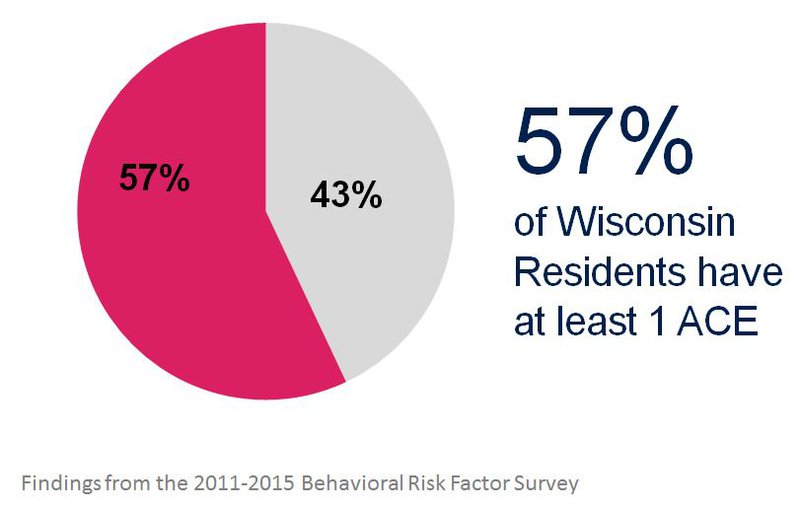Overview
Adverse childhood experiences (ACEs) are negative life events or experiences which occur during childhood and have the potential to impede healthy child development.
An ACE score is a measure of the cumulative exposure to adverse childhood experiences. Exposure to any one of the criteria is counted as one point; points are tallied and totaled for a final score. An ACE score does not capture the severity or frequency of an adverse experience; instead it illuminates the number of ACE categories experienced. ACEs can have long-term, damaging consequences, such as higher risk behaviors and poor health outcomes, and are a leading determinant of public health spending.
This short video explains ACEs in a very succinct, yet comprehensive way.
The Centers for Disease Control and Prevention (CDC) and its partners sponsor an annual survey to collect data within all 50 states, including Wisconsin. Survey questions focus on a range of health behaviors and conditions, as well as a host of health-related risk factors. Early research on adverse childhood experiences led the CDC to develop a specific survey module of ACE-related questions. Wisconsin includes this module in the state's annual Behavioral Risk Factor Surveillance System (BRFSS). To assess the occurrence of ACEs among Wisconsin adults, the BRFSS asks if they experienced any of the following events or circumstances prior to the age of 181:
- Recurrent physical abuse
- Recurrent emotional abuse
- Sexual abuse
- An alcohol or other drug abuser in the household
- An incarcerated family member
- A household member who was chronically depressed, mentally ill, institutionalized or suicidal
- Violence between adults in the home
- Parental separation or divorce
- Poverty/neglect
ACEs are common and more than half of the Wisconsin population has at least one ACE. 74% of current smokers have one or more ACE2, and each individual ACE is correlated with higher smoking prevalence.3 ACEs are also correlated with race/ethnicity as Native Americans and blacks have higher rates of ACEs than Asians, Hispanic/Latinos, and whites. Use any of these data slides to share information at presentations and community events. These can be edited to fit the needs of your audience.

Even though ACEs are very prevalent in Wisconsin, there are tangible next steps we can take to lower the impact ACEs have on smoking.
- Educate on policy change
- Engage in partnerships with other organizations, agencies, partners, etc. around ACEs
- Learn more about protective factors (individual, family, and peer and social)
- Trauma-informed care
- Paradigm shift from, "What's wrong with you?" to "What happened to you?"
- This shift helps you avoid assumptions and is far more engaging and accepting when working with folks who have experienced adversity
- Trauma-informed care resources
- Paradigm shift from, "What's wrong with you?" to "What happened to you?"
References
- The Influence of Adverse Childhood Experiences on the Health of Wisconsin Citizens in Adulthood. (2015). Madison, WI: The Child Abuse and Neglect Prevention Board.
- BRFSS (2011-2013)
- BRFSS (2011-2014)

